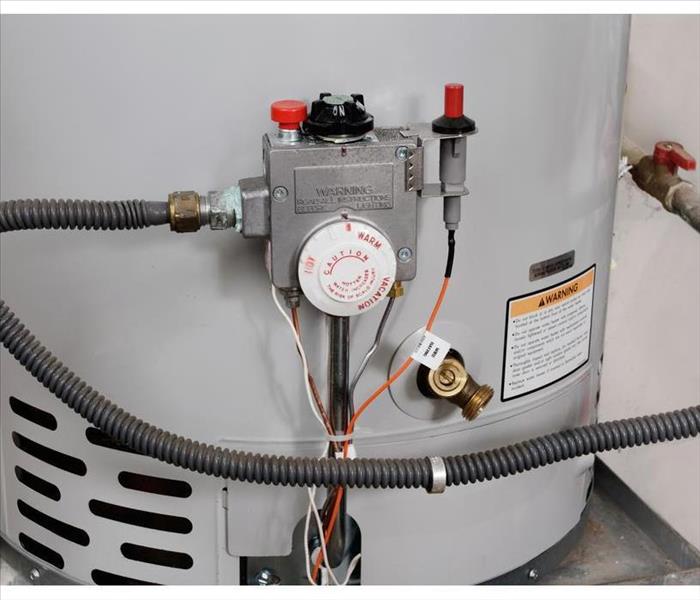How To Clean Up a Water Heater Leak
1/24/2022 (Permalink)
How To Cleanup After Water Damage
A leaking water heater can cause significant problems at a residence in San Antonio, TX. Here are the measures necessary to mitigate water damage.
Identify the Source
There are several reasons a water heater may leak. A quick inspection of the exterior may indicate one of the following issues:
- Corroded water tank
- Faulty drain valve
- Faulty temperature and pressure relief valve
- Leaky inlet and outlet connections
Even if you cannot identify the cause of a broken water heater, try to determine the source of the leak. Condensation may resemble a leak.
Turn Off the Power
Shut off a leaking water heater at the circuit breaker box or by turning off the gas dial or switch. Turn off the cold water shut-off valve located above or near the heater or the main water valve to your home. These measures can slow down a leak.
Drain the Tank
After the power and water are off, you can drain the tank to attempt a repair. There are several steps to remove water from a heater:
- Run hot water in a sink or tub
- Wait for remaining water in tank to cool
- Open the pressure relief valve
- Run a hose from the drainage spigot to a bucket
- Turn on the spigot
These steps can enable you to replace valves safely. If you do not want to drain the tank or attempt repairs yourself, contact a repair specialist or licensed plumber to work on a failed water heater.
Dry the Area
Limit water damage and the risk of mold growth by removing soaked carpets. Dry the floor and any walls exposed to the water. You may want to run a dehumidifier or use a desiccant such as silica gel. Ventilation will promote faster drying.
If a leak is extensive, contact water damage cleanup experts in San Antonio, TX. Specialists can use commercial-grade equipment to extract standing water and recommend the best approach for dealing with materials soaked by a leaking water heater.






 24/7 Emergency Service
24/7 Emergency Service
